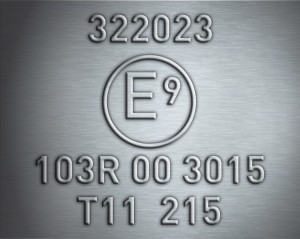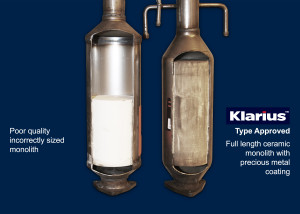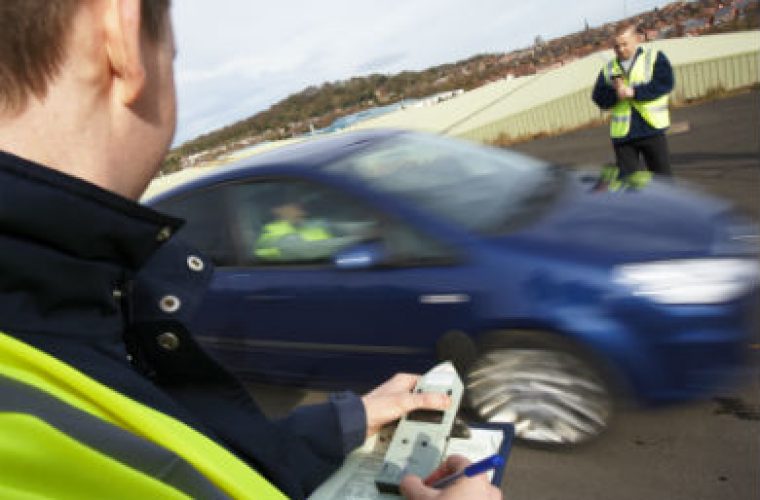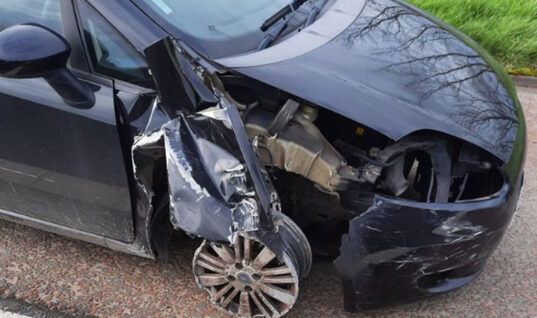Klarius Products, a producer of type-approved exhausts, catalytic converters (CATs) and diesel particulate filters (DPFs), has responded to the question: What does type-approval actually mean?
Doug Bentley, head of research and development at Klarius Products, explains type-approval and why it is an important consideration for replacement emissions equipment.
 ‘Meets specified standards’
‘Meets specified standards’
In the words of the Vehicle Standards Agency (VCA), type-approval offers ‘confirmation that production and samples of a design will meet specified performance standards’.
For emissions components this relates to noise, fuel efficiency and levels of back pressure.
The approval stipulates that an aftermarket component must reach, or exceed the quality standard of the corresponding OE part.
Manufacturers are required to confirm that they can produce the part to conforming standards with regards to repeatability before mass production can begin.
 ‘Legislative standards’
‘Legislative standards’
Type-approval in the UK is influenced by EU legislative standards, with similar regulations employed around the world.
Third party authorities, such as the VCA in the UK, act as a non-biased technical service, ensuring that testing is fair and that approved product certifications are transmitted to other institutions.
Selecting a type-approved replacement aftermarket exhaust, CAT or DPF can guarantee that the original performance levels of a vehicle are preserved, ensuring that a vehicle will pass the MOT.
 Non-type approved parts
Non-type approved parts
Selecting a non-type approved exhaust, CAT or DPF can lead to a wide range of issues.
Inferior exhausts can cause incorrect back pressure in the emissions system, as improper design strangles the engine, damaging fuel efficiency.
Non-type approved CATs can contain a reduced level of precious metal coating in the internal substrate, which means more noxious gases are released into the atmosphere as the exhaust gas catalysing reaction is not as effective.
Low quality DPFs may contain an internal ceramic monolith of reduced size inside the metal casing, which means the device fills with soot and ash far quicker than a compliant unit.
In addition, non-type approved parts may not fit to a vehicle, requiring the fitter to adapt the part to create a ‘usable’ solution.
 Responsibility ‘with the manufacturer’
Responsibility ‘with the manufacturer’
Manufacturers of type-approved components will reference original equipment products and then test on vehicles to create a prototype part, with the legislatively relevant specifications relayed to the regulatory body prior to testing.

Type-approval offers ‘confirmation that production and samples of a design will meet specified performance standards’.
Once control conformity has been established and the component tested, the part will be assigned a unique type-approval number and corresponding certificate, typically embossed on the outside of the exhaust, CAT or DPF in question.
If minor changes are made to the product, it is the manufacturer’s responsibility to validate any changes with the relevant approval authority to make sure changes comply with the legislation.
 Legality
Legality
It is currently illegal to sell non-type approved CATs for vehicles that were registered after the 1st March 2001, while all Euro 5 and most Euro 4 DPFs must be type-approved to be legally compliant.
In the UK it is not illegal to fit a non-type approved exhaust, but fitting such a part to a vehicle that is under warranty could void it; it will also be illegal if driven abroad.
The ideal approach is to always specify a type-approved exhaust replacement; manufacturers like Klarius will type-approve all applicable exhausts, CATs and DPFs.
 Stringent quality processes
Stringent quality processes
Klarius carries out fitment testing of components on vehicles of correct model and make, which ensures that a part can be seamlessly installed on the ramp.
While an original component design may be type-approved, the part in question could have evolved during a production run to service various models in a range.
An emissions system for a bottom of the range saloon will not correspond to the top of range sports variant, so this approach is vital to providing an optimised part.
Manufacturing processes such as utilising aluminium coated steel to improve durability are not assessed by type-approval either, so one should conduct research into the benefits an accomplished manufacturer can provide.
 ‘Worst case’
‘Worst case’
Specifying a non-type-approved part results in reduced vehicle performance, and in worst case component or MOT failure.

Non-type approved CATs can contain a reduced level of precious metal coating in the internal substrate, which means more noxious gases are released into the atmosphere as the exhaust gas catalysing reaction is not as effective.
This results in the costly process of additional replacements and increased ramp time.
By sourcing a type-approved component, an end user can be sure that the part will preserve the emissions characteristics of their vehicle, while providing a longer service life.
However, type-approval also helps to ensure that noise and emissions levels fall within acceptable parameters, protecting the environment.
To make an informed purchasing choice, looking beyond type-approval to assess processes employed by certain manufacturers can result in an excellent replacement rather than an adequate one.
For further information about Klarius, select ‘more details’ below.







